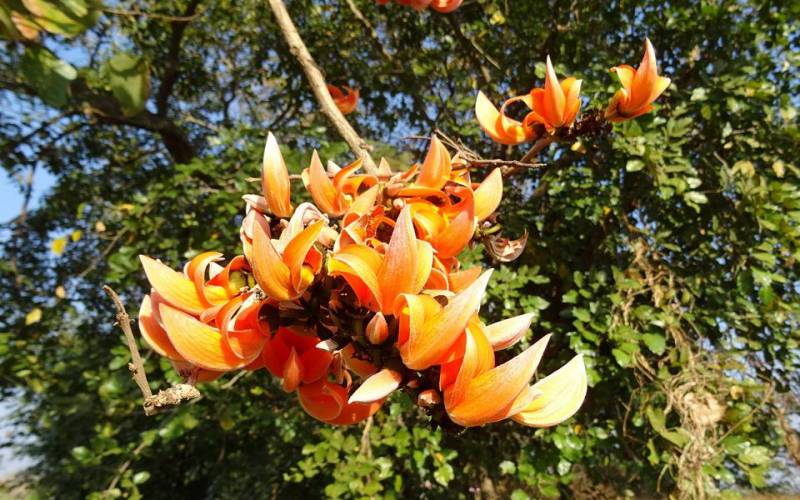Butea Monosperma, India
Butea plantations or Palash tree are found all over India. These trees are cultivated at high altitudes in a tropical climate. A significant amount of the world's supply of Butea grows in the Terai region of Nepal, particularly in the districts of Rautahat and Bara. Nepal is also known for its quality seeds and oilseeds.
Butea monosperm is the main ingredient in a Chinese herbal medicine called "Jin Bu Huan" or "Golden Ball Pill". It is used to treat many diseases, such as cardiovascular disease and diabetes. This herb has been used for a long time in India and China as a health tonic and it also boosts energy.
Taste: The taste of this herb is slightly sweet and bitter. It tastes like walnuts but with an added flavour of camphor.
Color: The color of butea monosperm powder is yellow-brown.
Scent: The smell of this herb is strong, but it can be smelled at a distance. It smells like roasted walnuts.
Cultivation: This herb is cultivated in Northeast China and its cultivation process requires a large amount of land area. Therefore, this herb cannot be grown in large quantities.
Extraction: The extraction method used to produce butea monosperm extract is hot water extraction.
Usage: Butea monosperm contains many essential amino acids such as leucine, lysine and arginine. It also contains calcium, magnesium and phosphorus. The plant is also rich in carbohydrates, lipids and fiber. Butea monosperm can be found in many forms, including tablets, powders, tinctures and capsules. This herb can be ingested as a tea if it is produced as a powder or if it comes as an extract or liquid.
Information
Hindu Theology, the Palash tree represent to Moon Planet (Chandra or Soma Graha).



